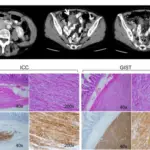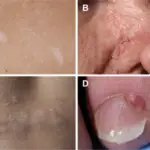Neurofibromatosis Type 2 is also known as central neurofibromatosis a genetic disorder marked by the development of tumors in the central and peripheral nervous system.
What is the Pathology of Neurofibromatosis Type 2?
The pathology of neurofibromatosis type 2 is: A multisystem genetic syndrome allied with spinal cord schwannomas, bilateral vestibular schwannomas, meningiomas, juvenile cataracts, with a paucity of cutaneous features, and gliomas.
-Etiology: The cause of neurofibromatosis is NF2 gene mutation.
-Genes involved: NF2 gene.
-Pathogenesis: The sequence of events that lead to neurofibromatosis type 2 is a result of NF2 mutation, which severs as a tumor suppressor, declined function, and/or production of the gene grades to the tendency to develop of tumors.
-Morphology: Nodules.
-Histology: The histology associated with neurofibromatosis type 2 shows 3 cell types, glial cells, Schwann cells, or meningeal cells.
How does Neurofibromatosis Type 2 Present?
Patients with neurofibromatosis typically have no gender prevalence present at an age range of the early 20s. The symptoms, features, and clinical findings associated with neurofibromatosis type 2 include bilateral schwannomas, meningioma, gliomas, visual defects, cranial nerves palsies.
How is Neurofibromatosis Type 2 Diagnosed?
The neurofibromatosis type 2 is diagnosed genetic testing, imaging studies, auditory. Ophthalmic and histological.
How is Neurofibromatosis Type 2 Treated?
The neurofibromatosis type 2 is treated by tumor resection radiotherapy, pain medication chemotherapy, auditory brain stem implants.
What is the Prognosis of Neurofibromatosis Type 2?
The prognosis of neurofibromatosis is fair since it depends on the age and the progression of the disease.



